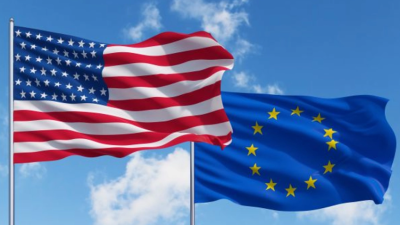What Are the Biggest Cultural Differences Between the US and Europe?
Culture is a product of the continuous development and progress of human society. It encompasses a wide range of aspects, including ideologies, ways of thinking, values, and lifestyles. Cultural differences often arise between countries, ethnic groups, and regions. The United States and Europe, both representative of developed Western nations, also have distinct cultural differences.

- In the United States, people are highly punctual and often arrive before their appointed time. Therefore, punctuality is a crucial element of American social etiquette. At gatherings, hosts ensure that adequate food and drinks are provided and clearly inform guests of the time and location. In the United States, interactions are relatively direct, and people often express their opinions and ideas directly, even bluntly. In most parts of the United States, greetings such as kisses and hugs are less common.
- In Europe, however, time is more flexible. For example, in Southern Europe, it's common for people to be more than ten minutes late. In social situations, Europeans tend to be more reserved and avoid overly direct expressions of opinion. In some European countries, greetings are more intimate, often involving kisses and hugs.

- In the United States, fast food is prevalent, leaving people with little time or energy for a fine meal. Americans prefer convenient, quick options for dining. Most Americans eat dinner early, between 5 and 8 p.m. Dining etiquette is also very important in the United States, with people typically using knives and other utensils. However, this etiquette is gradually declining, with more and more families eating with their hands.
- In contrast, Europe has a long history of dining, encompassing unique food cultures from various countries and regions. Europeans tend to view dining as a social and enjoyable activity. Most people in Europe eat dinner between 8 and 10 p.m., and lunch is a significant time period, often featuring a richer menu. In regions like Germany and Austria, traditional festivals and celebrations, such as Oktoberfest, have become an integral part of Europe's rich and diverse culinary culture.
- The United States is known as a "rational society," where people rely more on logic than emotion when approaching problems. In the United States, people are relatively open-minded and willing to embrace new ideas. Americans also prioritize self-promotion and self-presentation, which is particularly evident in job applications and competition.
- In contrast, European thinking is more rational, and European society places a greater emphasis on history, culture, and tradition. While people in Western and Northern Europe have a stronger awareness of individual freedom and equal protection systems, tradition and history are more important in Eastern Europe and other regions. European culture, with its rich history, often fosters a greater desire for experiences that reflect tradition, classicism, and aesthetics.
- In the United States, individual interests and human rights are crucial values. The pursuit of freedom, equality, and independence is centered on the individual. Americans actively pursue their dreams and goals, often demonstrating an unyielding spirit and unwavering determination.
- In contrast, European values place a greater emphasis on collective and social responsibility. Beyond the pursuit of individual freedom and rights, Europeans emphasize social justice, equality, and welfare, prioritizing interaction, coordination, and integration between individuals and social groups. Europeans prioritize environmental and ecological protection and advocate for sustainable development. In this sense, European culture is a more globalized form of culture.




